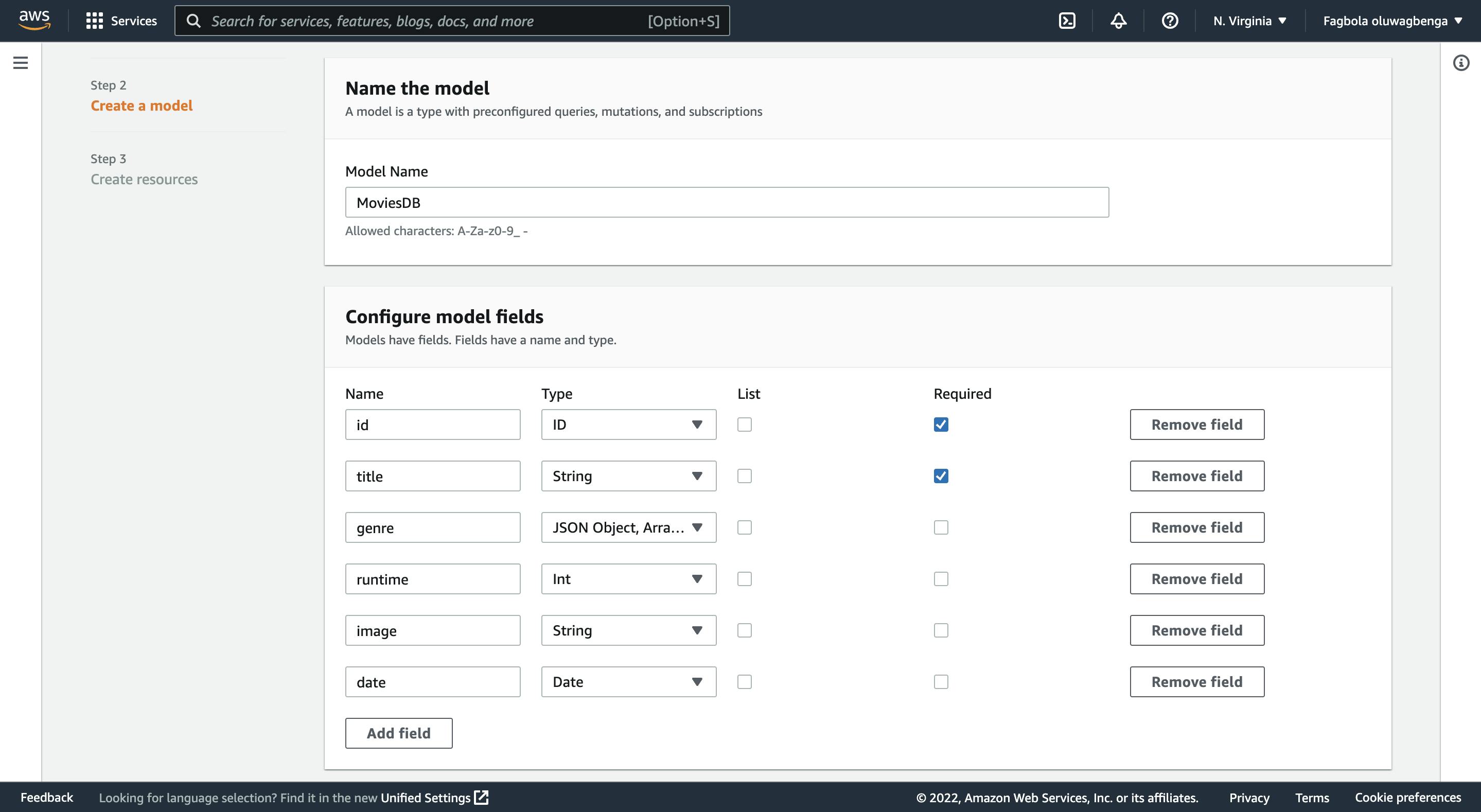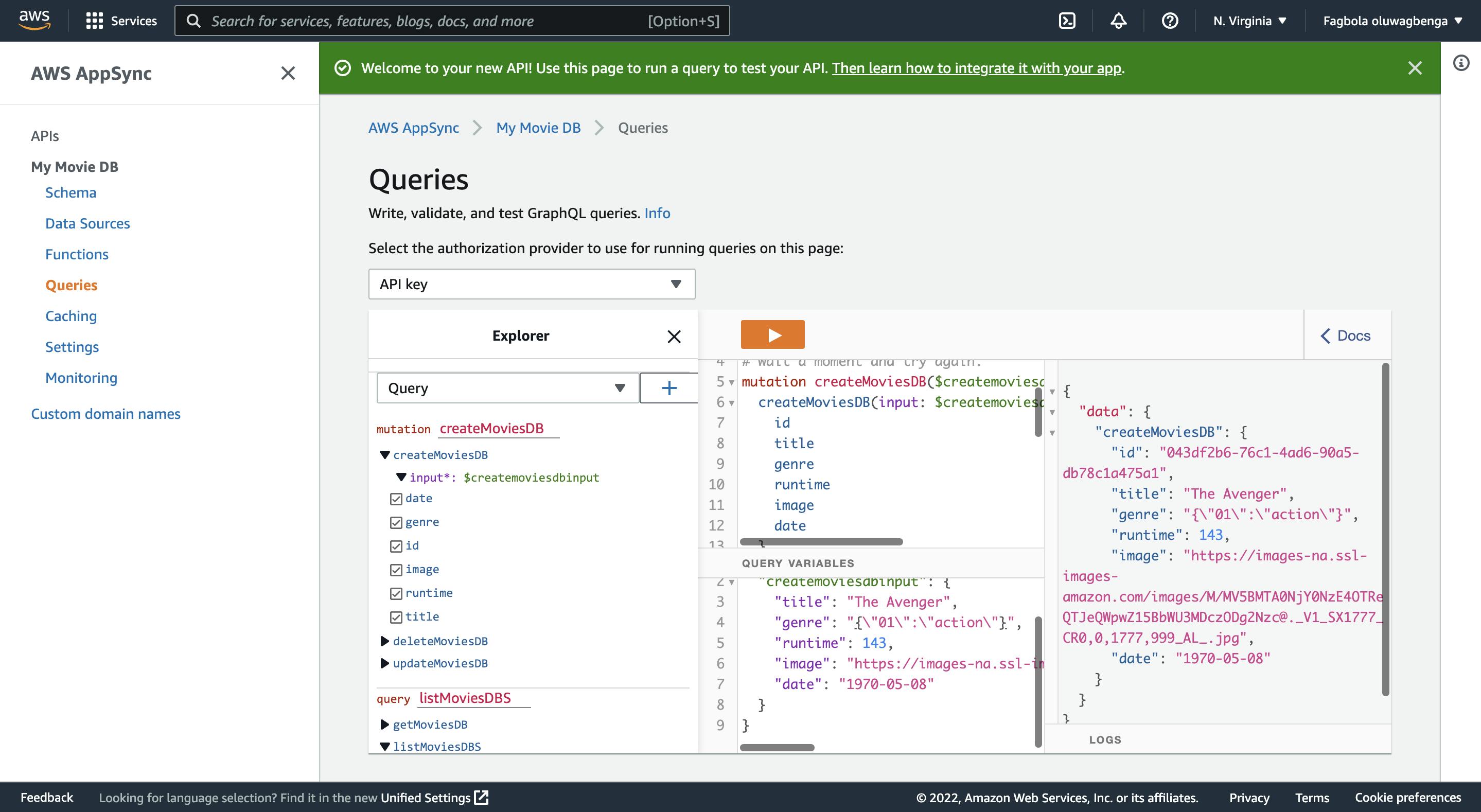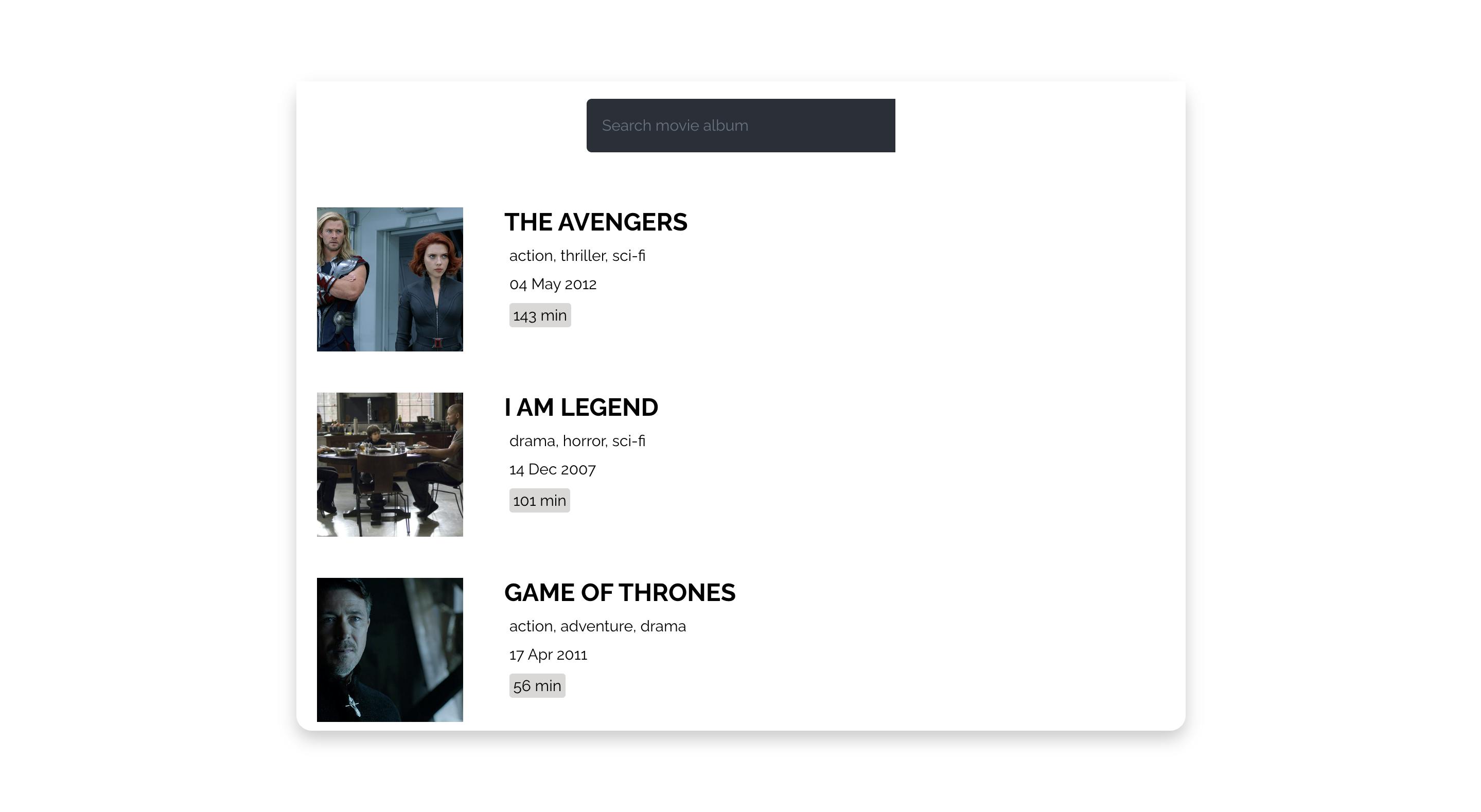Table of contents
No headings in the article.
Hey Guys 👋🏽,
So roughly a week ago, I was tasked with creating dummy data and consuming it with react and GraphQL.
While surfing the web for a quick and seamless approach, I stumbled upon Aws AppSync for the first time. And found it helpful hence decided to share it.
Prerequisites basic knowledge of AWS cloud should do.
AppSync, as defined by AWS, is a serverless GraphQL and Pub/Sub API service that simplifies building modern web and mobile applications.
AWS AppSync GraphQL APIs simplify application development by providing a single endpoint to securely query or update data from multiple databases, microservices, and APIs.
Now you get the gist? So let's dive in.
The first step is to sign in to your AWS cloud account, and if you haven't created one, you can sign up. Kindly note you would be requested to input your card details in other for AWS to verify your account.
You can easily search through the search bar at the top left corner of the app bar with the keyword AWS AppSync. You would see a prompt to create an API.

Then by the dashboard, you would get multiple ways/options towards creating an API. I urge you to browse through all for a better understanding of what might best fit your intended use case.
For this tutorial, I would be working with the Create with Wizard option.
So we would go ahead by giving it a model name for this, I would call it MovieDB. Then I would configure the model field, by entering all necessary data fields and their corresponding type. By the side, you can get to see how we ensure the data is required. which is an equivalent of id: ID! or title: String!. this easy-to-use input and drop-down form fields help eliminate user error to the barest minimum.

then we move to the 3rd stage of naming our API and then click create. It would instantiate a dynamo DB for us.

Below is the resultant schema generated for us. just imagine the time saved from writing the code below without the elimination of human error 😩.
type MoviesDB {
id: ID!
title: String!
genre: AWSJSON
runtime: Int
image: String
date: AWSDate
}
type Query {
getMoviesDB(id: ID!): MoviesDB
listMoviesDBS(filter: TableMoviesDBFilterInput, limit: Int, nextToken: String): MoviesDBConnection
}
type Mutation {
createMoviesDB(input: CreateMoviesDBInput!): MoviesDB
updateMoviesDB(input: UpdateMoviesDBInput!): MoviesDB
deleteMoviesDB(input: DeleteMoviesDBInput!): MoviesDB
}
type Subscription {
onCreateMoviesDB(id: ID, title: String, genre: AWSJSON, runtime: Int, image: String): MoviesDB @aws_subscribe(mutations: ["createMoviesDB"])
onUpdateMoviesDB(id: ID, title: String, genre: AWSJSON, runtime: Int, image: String): MoviesDB @aws_subscribe(mutations: ["updateMoviesDB"])
onDeleteMoviesDB(id: ID, title: String, genre: AWSJSON, runtime: Int, image: String): MoviesDB @aws_subscribe(mutations: ["deleteMoviesDB"])
}
input TableMoviesDBFilterInput {
id: TableIDFilterInput
title: TableStringFilterInput
runtime: TableIntFilterInput
image: TableStringFilterInput
date: TableStringFilterInput
}
input CreateMoviesDBInput {
title: String!
genre: AWSJSON
runtime: Int
image: String
date: AWSDate
}
input UpdateMoviesDBInput {
id: ID!
title: String
genre: AWSJSON
runtime: Int
image: String
date: AWSDate
}
input DeleteMoviesDBInput {
id: ID!
}
type MoviesDBConnection {
items: [MoviesDB]
nextToken: String
}
input TableStringFilterInput {
ne: String
eq: String
le: String
lt: String
ge: String
gt: String
contains: String
notContains: String
between: [String]
beginsWith: String
}
input TableIDFilterInput {
ne: ID
eq: ID
le: ID
lt: ID
ge: ID
gt: ID
contains: ID
notContains: ID
between: [ID]
beginsWith: ID
}
input TableBooleanFilterInput {
ne: Boolean
eq: Boolean
}
input TableIntFilterInput {
ne: Int
eq: Int
le: Int
lt: Int
ge: Int
gt: Int
contains: Int
notContains: Int
between: [Int]
}
input TableFloatFilterInput {
ne: Float
eq: Float
le: Float
lt: Float
ge: Float
gt: Float
contains: Float
notContains: Float
between: [Float]
}
We can seamlessly make queries and test our APIs. as shown below

We can integrate with any app by downloading the respective config as shown below.

Let me stop here and continue on a later integration with React. kindly stay tuned with the screenshot - teaser 😊.
